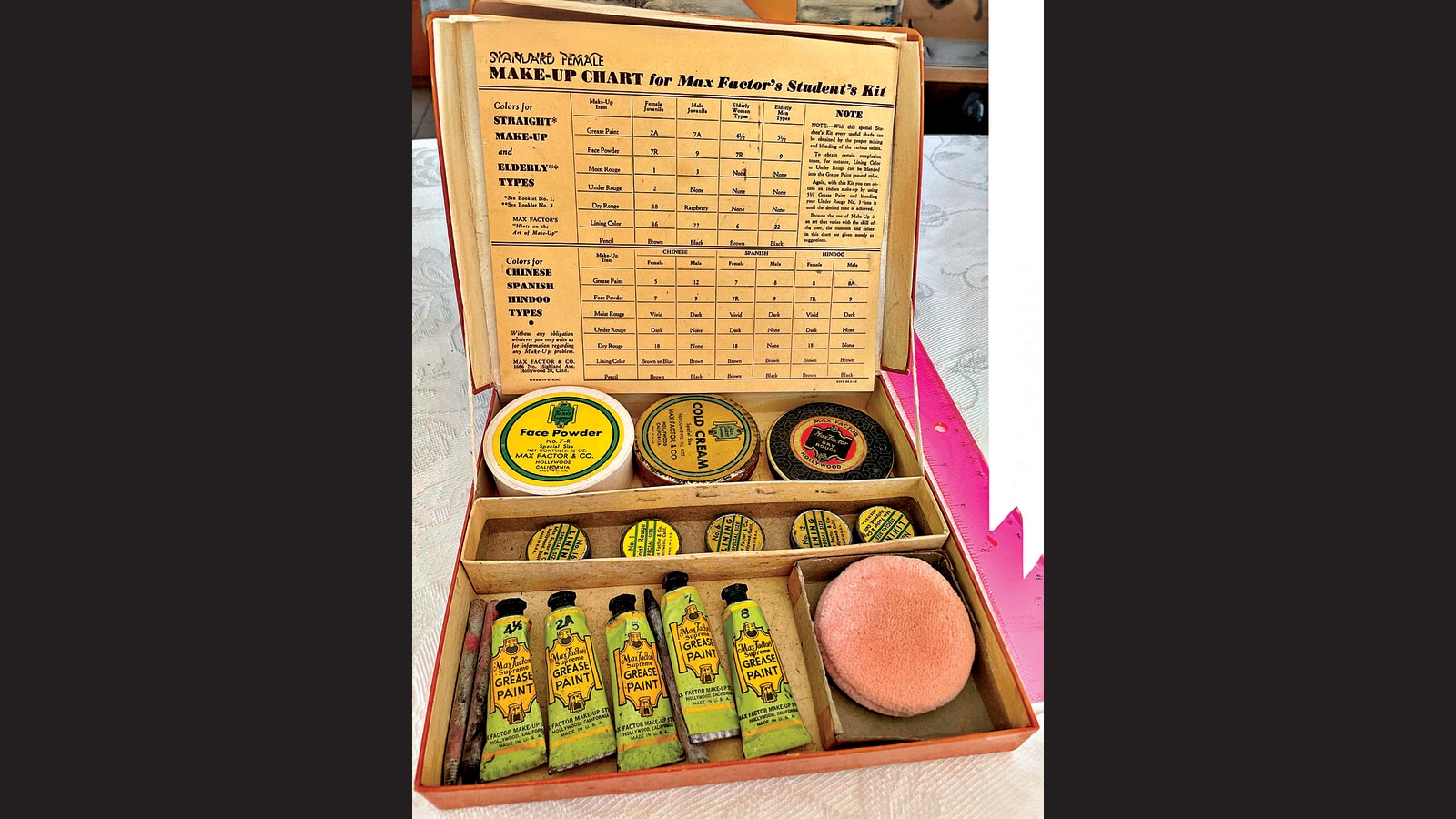
[ad_1]
Pill-sized lipsticks, foundation packed into single-use sachets, and makeup brushes no larger than a fingertip — how things have shrunk in the world of beauty products.

Even 100 years ago, in the 1920s, the makeup kit resembled a small treasure chest.
Where today a whole kit can fit into a wallet-sized pouch, cosmetics a century ago were kept and carried around in these wooden boxes, often carved with intricate floral motifs and lined with velvet. The boxes were designed to hold multiple tiers of powders, paints and brushes. As long-distance travel picked up among women, they followed in the tradition of the apothecary boxes and vanity boxes used for storage in the 19th century.
The focus at this time was mainly haircare and skincare, rather than the multi-shade approach to face makeup that takes centrestage today. And this was because, for centuries, the use of vivid colours on the face was frowned upon in the Western world, considered the mark of a prostitute.
When and how did the shrink begin? The trend can be traced to show business.
It was gas lighting that first made makeup necessary on stage, by the 1840s. In the relative glare of these new lights, faces were seen far more clearly than they had been on candle-lit stages, and so actors began to use grease paint to even out facial skin tones, hide flaws or accentuate features.
Then cinema was born, and there was a lot more detail visible on the big screen. Makeup artists began experimenting with combinations for film. A pioneer among them was a Polish-American named Max Factor (born Maksymilian Faktorowicz).

By the 1910s, Factor was taking the grease paints out of their tins and moving them into the more-sanitary and more-lightweight aluminium tubes. By 1920, he was selling his kits to the public at large, as Max Factor Society Makeup.
These came with mixing instructions to achieve foundation tones for what were then called the “Chinese”, “Spanish”, and “Hindoo” looks, says Los Angeles-based hair and makeup expert Cici Andersen. As the movie industry birthed the filmstar, the segment took off. People wanted to look like these larger-than-life celebrities; this is what first lent an aspirational quality to the Max Factor product line.
Women were also taking to the streets at this time, around the Western world, demanding the right to vote, among other things. These women began to paint their faces as a way of reclaiming their bodies and identities, and rebelling against the establishment that sought to curb their decision-making power.
The rise of Egyptomania helped. Howard Carter unearthed the boy-king Tutankhamun’s tomb in 1922, and women wanted the dramatic eyes and outlined lips of the suddenly ubiquitous Ancient Egyptian art.
Between the tubes and glass bottles, brushes, wigs, gums and powder puffs, the chests were still quite large and heavy.
Then came World War 2, and all available metals and materials were redirected to the war effort. This is when the makeup box suddenly got lighter, Andersen says.“Some brands modified their lux packaging and went from metal back to cardboard… and one may have also found the complimentary powder puff missing from one’s purchase.”
Brands such as Lancome, Alexandra de Markoff and Revlon, founded in the early 1930s, were making the switch. By the 1950s, the cases themselves evolved into the suitcase-shaped models that would remain popular until the ’60s.

There was a boom at this time, as women probably started to allow themselves the little extra luxuries that they cut back on during the war effort, Andersen says.
Then, in the ’60s, new light and cheap kinds of plastic would change everything. Cosmetics packaging moved away from the heavier but easily recyclable aluminium and cardboard, to this new but non-recyclable alternative.
In an age of rebellion, experimentation and self-exploration, the palette exploded too. Plastic makeup kits began to offer fun, candy colours. “This was also a time when the perspective on makeup started to change. As it became cheaper, products that had once been viewed as collectibles began to be seen as more disposable,” says Andersen. “The packaging itself was now much harder to recycle, or was non-recyclable.”
Around the same time, as air travel shrunk the world, “travel-sized” cosmetics — tiny items meant essentially as samplers — began to be handed out as gifts with purchases.
The environmental impact of the many, small plastic bottles and palettes has been immense, Andersen says. Which doesn’t mean that smaller packaging is necessarily bad news. “A combination of sustainable, low-waste packaging and reasonable, waste-free quantities would be ideal,” she says.
Mini mascaras, for instance, are a great way to portion a product that quickly runs dry. Refillable, recyclable cosmetic cases by brands such as Axiology, Half Magic and RMS are a step forward. In a full-circle detail, this packaging is often made of recyclable glass and aluminium.
There are really few rules to makeup, so multi-use products could be a good way forward too, Andersen says. “If you can blend your lip colour into your cheek to create a blush, or if your self-setting eye-shadow cream happens to be a perfect colour for the brow, go for it.”
[ad_2]
Source link








